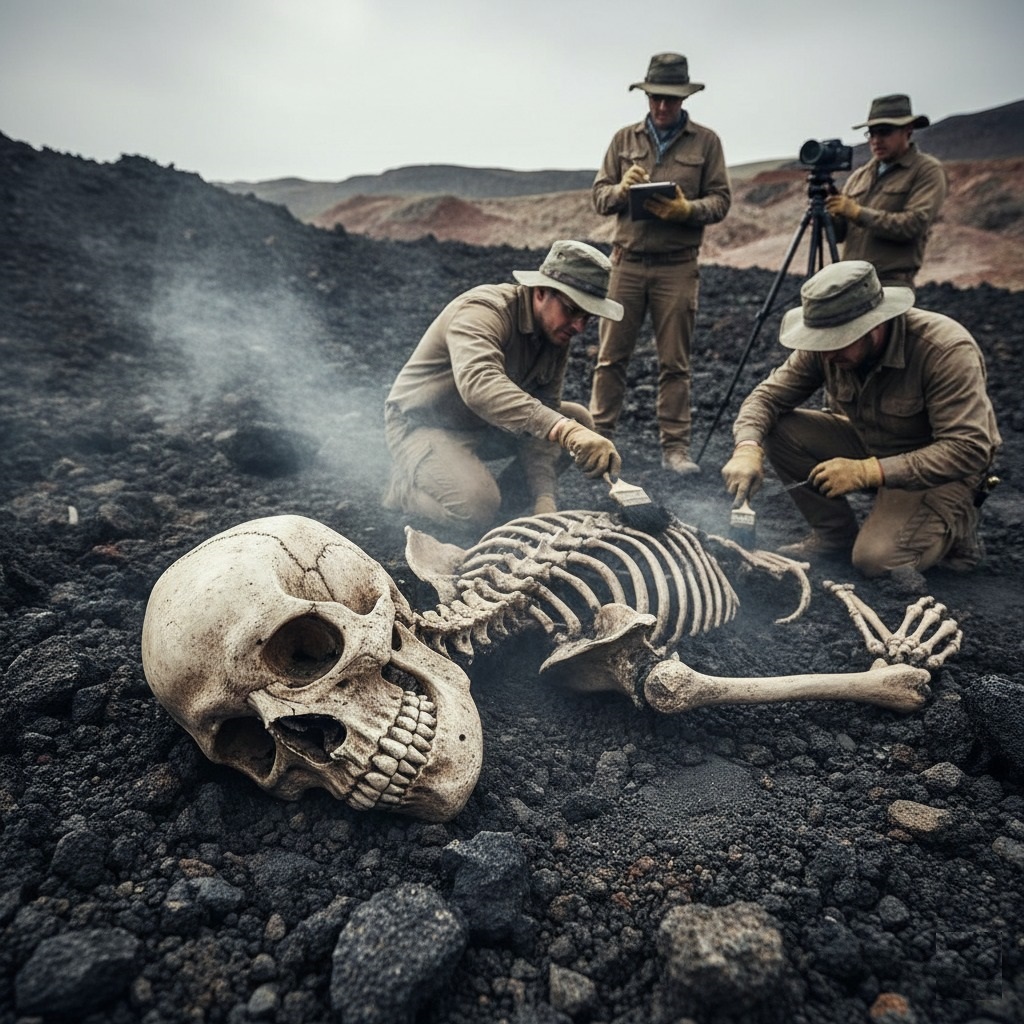Unearthing Ancient Secrets: The Volcanic Remains of Pompeii

The air hung heavy and still, thick with the ghosts of a forgotten morning. Dr. Aris Thorne, a man whose hands knew the whisper of ancient dust as intimately as his own heartbeat, knelt amongst the obsidian rubble of what was once Pompeii. The infamous AD 79 eruption of Mount Vesuvius had frozen life in an instant, preserving tragedies and triumphs alike in its volcanic embrace. Now, nearly two millennia later, Aris and his team were meticulously peeling back layers of time, not just of rock, but of human experience.
His trowel, a familiar extension of his will, scraped against a peculiar density. Not the usual loose pumice, nor the hardened ash, but something… skeletal. He signalled to his protégé, Lena, who moved with the quiet reverence of a seasoned archaeologist, despite her youth. Together, they began the delicate dance of excavation. The ground, a coarse tapestry of dark grey and black volcanic rocks and finer ash, yielded reluctantly, each grain holding centuries of secrets.
As the sun dipped lower, casting long, dramatic shadows, the form emerged. A human skeleton, lying partially buried, its posture suggesting a sudden, inescapable end. Aris felt the familiar pang of connection across time, a silent acknowledgement of a life abruptly extinguished. The skull, prominent in the foreground and slightly to the left, was intricately detailed with visible teeth and empty eye sockets. It appeared weathered and aged, a light bone colour contrasting starkly with the dark surroundings. Behind it, the spinal column and rib cage extended into the midground, some bones partially obscured by the rocky terrain.
“Look,” Lena whispered, her voice barely audible above the gentle evening breeze. A soft, ethereal white mist, almost like a sigh from the earth itself, began to drift gently over the skeletal remains, particularly around the rib cage and spine. It wasn’t merely atmospheric moisture; it felt like the breath of the past, an eerie, mysterious presence that made the hairs on Aris’s arms stand on end. The diffused lighting of dusk lent an almost sacred glow, highlighting the intricate textures of the bones and the rough contours of the rocks.
The team worked in near silence, their movements precise and respectful. This wasn’t just a collection of bones; it was a narrative, a final tableau of a Pompeian citizen caught in the cataclysm. The reddish-brown earth rising slightly in the background hinted at further geological features, reminding them of the powerful forces that had shaped this landscape and its tragic history. Each brushstroke, each careful lift of ash, was an act of storytelling, bringing this ancient life back into the light.
Aris knew this discovery, like so many others at Pompeii, wouldn’t just be catalogued. It would be studied, debated, and ultimately, it would speak. It would tell future generations about the fragility of life, the devastating power of nature, and the enduring human spirit that, even in its final moments, leaves an indelible mark on time. As the last light faded, enveloping the site in a somber, stark embrace, Aris looked at the unearthed skeleton, a silent sentinel from the past, and understood: the secrets of Pompeii were truly endless, and each discovery was a profound conversation with antiquity.
